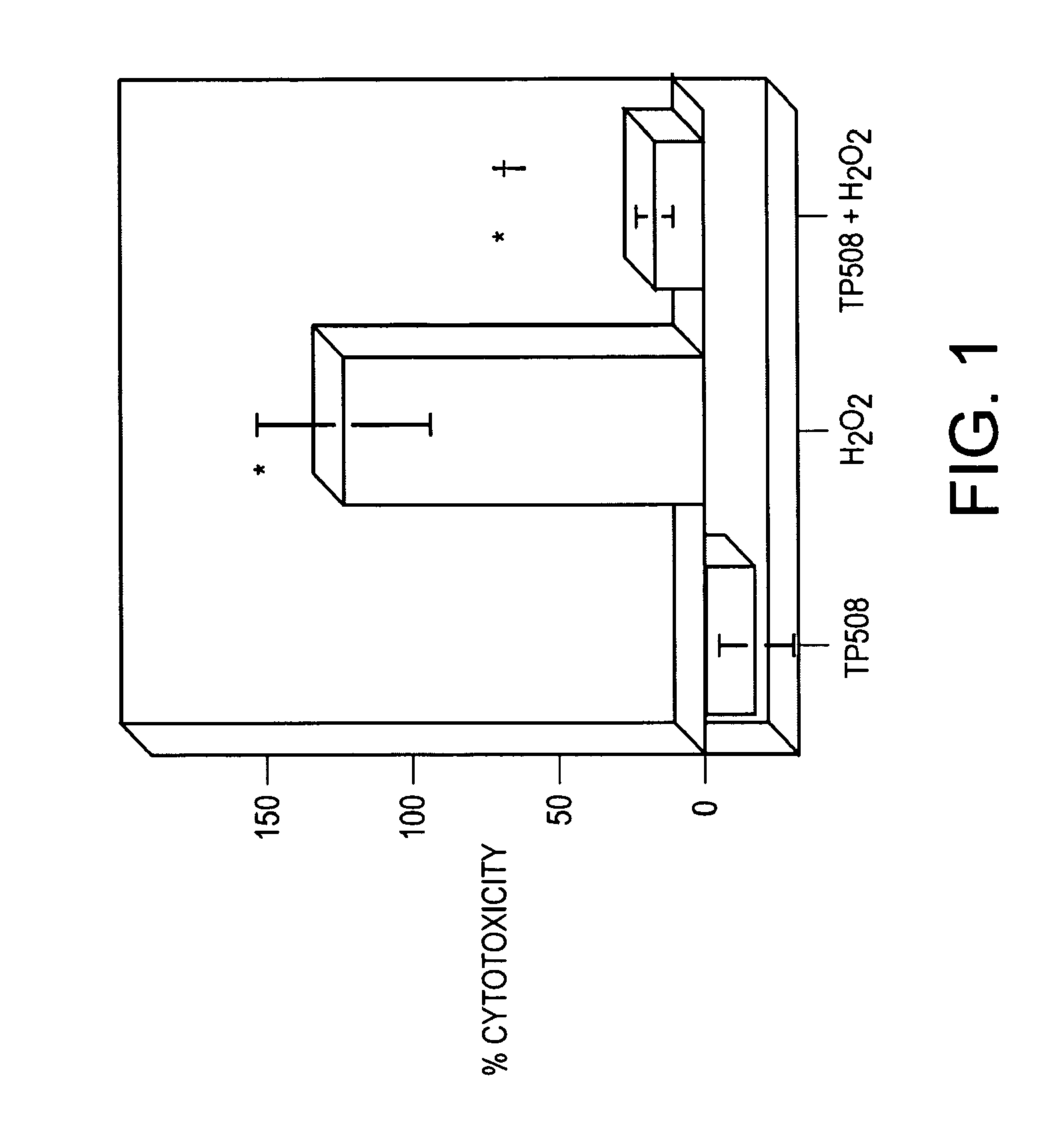Method of treating degenerative diseases
a degenerative disease and disease technology, applied in the field of degenerative diseases, can solve the problems of macular degeneration, blindness in people, frequent disability of patients by symptoms,
- Summary
- Abstract
- Description
- Claims
- Application Information
AI Technical Summary
Benefits of technology
Problems solved by technology
Method used
Image
Examples
example 1
Oxidative Stress Responses of Human Umbilical Vein Endothelial Cells
[0080]Human umbilical vein endothelial cells (HUVECs) were seeded into 12-well plates pre-coated with cell attachment factor at a density of 50,000 cells per well. Cells were allowed to attach overnight, at which point the plating medium was changed to basal medium (EBM), lacking growth factors and antibiotics, but supplemented with insulin-transferrin-selenium (Gibco, Grand Island, N.Y.) to prevent the cells from lifting off the plates during incubation in serum-free medium. After 24 hours, one set of wells was pretreated with 1 ml 10 μg / ml TP508 in EBM for 20 min at 37°. These wells were subsequently treated with 350 μl of 10 μg / ml TP508+100 mM H2O2. The other wells were treated with 350 μl / well of EBM alone, 100 mM H2O2, or 10 μg / ml TP508. The treated cells were incubated at 37° for 1 hr, at which point the media was removed and centrifuged for 2 min at 6,000 rpm at room temperature. Duplicate 100 μl aliquots of ...
example 2
Apoptosis Studies in B11-C Mouse Fibroblasts
[0082]Cells were cultured in serum-free medium for 48 hr, treated with indicated concentrations of TP508 or integrin activating RGD peptides, and then treated for 24 hours with 1.2 mM hydrogen peroxide. Apoptosis was determined by Annexin V and 7-AAD staining using flow microfluorimetry. TP508 has a protective effect, decreasing the number of Annexin V and 7-AAD positive cells, while integrin activating peptides appear to promote apoptosis. See FIGS. 2A and 2B.
example 3
Gene Array Analysis
[0083]A number of gene array analyses have been done using human microvascular endothelial cells (HMVECs). These data have been examined to see if particular mediators of apoptosis were altered by TP508.
[0084]Adult and neonatal human microvascular endothelial cells (HMVECs) obtained from Cambrex were plated into flasks coated with cell attachment factor in serum containing medium with growth factor supplements, switched to serum-free medium and cultured in normoxic or hypoxic (1% O2) environments. Twenty-four hours before harvesting, the cells were treated with TP508 or medium alone. Total RNA was extracted and processed for expression analysis using Affymetrics chips.
[0085]Heat maps from different sets of these cells all show significant differences in up-regulated genes and down-regulated genes between control and cells treated for 24 hours with TP508. A number of these genes are involved in cell cycle regulation, cell proliferation, and cell death. The reports ...
PUM
| Property | Measurement | Unit |
|---|---|---|
| length | aaaaa | aaaaa |
| size | aaaaa | aaaaa |
| rigidity | aaaaa | aaaaa |
Abstract
Description
Claims
Application Information
 Login to View More
Login to View More - R&D
- Intellectual Property
- Life Sciences
- Materials
- Tech Scout
- Unparalleled Data Quality
- Higher Quality Content
- 60% Fewer Hallucinations
Browse by: Latest US Patents, China's latest patents, Technical Efficacy Thesaurus, Application Domain, Technology Topic, Popular Technical Reports.
© 2025 PatSnap. All rights reserved.Legal|Privacy policy|Modern Slavery Act Transparency Statement|Sitemap|About US| Contact US: help@patsnap.com



